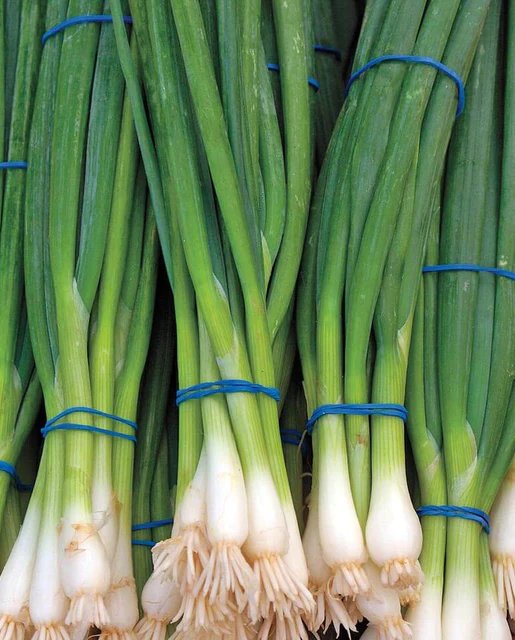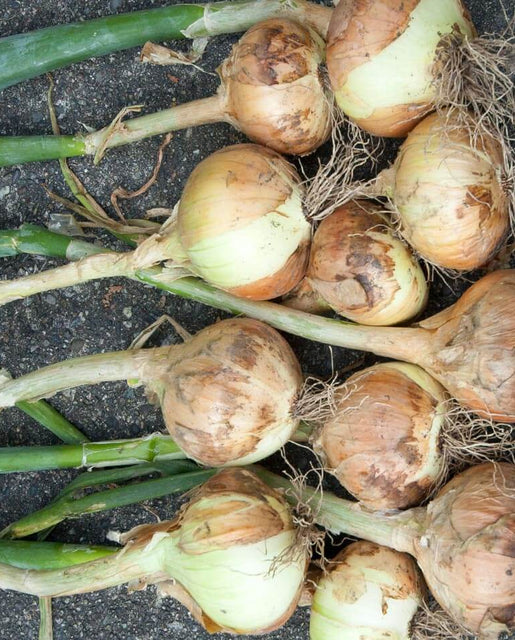For Product Registration and general enquires please contact us

Ramrod
$6.59 – $145.99
Sow Ramrod scallion seeds successively through spring, summer and autumn. September-sown seedlings are very cold-hardy and overwinter well for early spring harvests. A high-performance, boldly flavoured scallion bred for English gardens, but perfect for the coast.
West Coast Seeds ships anywhere in North America. However, we are not able to ship garlic, potatoes, asparagus crowns, bulbs, onion sets, Mason bee cocoons, or nematodes outside of Canada. We regret, we cannot accept returns or damages for orders outside of Canada. The minimum shipping charge to the US is $6.99.
Description
More details about Ramrod
Ramrod is a white bulbing Lisbon type scallion (or bunching onion) with stiff, erect leaves. Unlike Pacific 22, the bulb is small and forms late on this variety. Sow Ramrod scallion seeds successively through spring, summer and autumn. September-sown seedlings are very cold-hardy and overwinter well for early spring harvests. A high-performance, boldly flavoured scallion bred for English gardens, but perfect for the coast. Recommended by Alan Titchmarsh as a favourite scallion or “salad onion.” To increase the blanched white lower portion, simply sow or transplant into a shallow trench and hill soil up around the stems as they grow. Matures in 65 days, 150 days overwintered. (Open-pollinated seeds)-
- Excellent flavour
- White bulbing
- High performance
- Favourite salad onion
- Matures in 65 days
All About Ramrod
How to Grow Scallions

Step 1: Timing
Start shallots and storage onions indoors in late winter and early spring, and transplant 2-4 weeks after the last frost date. Overwintering onions need to be started in early summer, and transplanted by the middle of August. Scallions can be direct sown every 3 weeks from two weeks after the last frost date to late summer. Optimal soil temperature for germination: 21-25°C (70-75°F). Seeds will emerge in 6-12 days, depending on conditions.
Step 2: Starting
Transplants are preferred for home gardeners. Sow 3 seeds 5mm-1cm (¼-½”) deep in each cell of a 72-cell tray. Transplant as a clump, spacing each 15cm (6″) apart in rows 45-75cm (18-30″) apart. Scallions can be spaced at 2-5cm (1-2″) apart in rows 15cm (6″) apart.
Step 3: Growing
Ideal pH: 5.5-6.5 (6.0-6.8 for scallions). Fertile and well-drained soil in full sun is essential. Add well-rotted compost and dig ½-1 cup balanced organic fertilizer into the soil beneath each 3m (10′) of row. Keep moisture high in the top 20-30cm (8-12″) of soil. Most of the bulb should form on the surface of the soil, so don’t transplant too deeply. Bulb size is dependent on the size of the tops: the bigger the tops, the bigger the bulb. Provide August-planted scallions with the frost protection of a cloche or heavy row cover as the first frost date approaches.
Step 4: Germination
Days to maturity: From transplant date. In optimal conditions at least 75% of seeds should germinate. Usual seed life: 1 year. Per 100′ row: 260 seeds (scallions 1.2M), per acre: 76M seeds (scallions 1,045M).
Step 5: Harvest
Stop watering in the beginning of August to mature the bulbs in dry soil. After half the tops have fallen, push over the remainder, wait a week and lift the bulbs. Curing is essential for long storage: Spread bulbs out in a single layer in an airy spot out of direct sunlight. Once no more green is visible on any of the leaves, and they are dry and crisp, the onion is cured. If weather is poor, cure indoors. Storage: Keep onions in mesh sacks or hang in braids so they get good ventilation, and hang sacks where air is dry and very cool, but not freezing. Check them regularly and remove any sprouting or rotting onions. Well-cured storage onions should keep until late spring.
Tips!
Disease & Pests: Botrytis blast and downy mildew are common leaf diseases. One starts with white spots and streaks, the other with purple-grey areas on leaves. Leaves wither from the top down and plants die prematurely. Separate the overwintered and spring crops because disease starts in older plants and moves to younger. Avoid overhead watering and plant in open sunny locations. Use lots of compost and practice strict sanitation and crop rotation. Companion Planting: The pungent odour of onions repels many pests and also protects nearby garden vegetables. Plant chamomile and summer savory near onions to improve their flavour. Onions also work well alongside beets, Brassicas, carrots, dill, kohlrabi, leeks, lettuce, strawberries and tomatoes. Don’t plant onions near asparagus, or peas of any kind.Additional information
| Matures | in 65 days, 150 days overwintered |
|---|---|
| Quantity | 1g, 5g, 25g, 100g, 500g |
You must be logged in to post a review.









Reviews
There are no reviews yet.